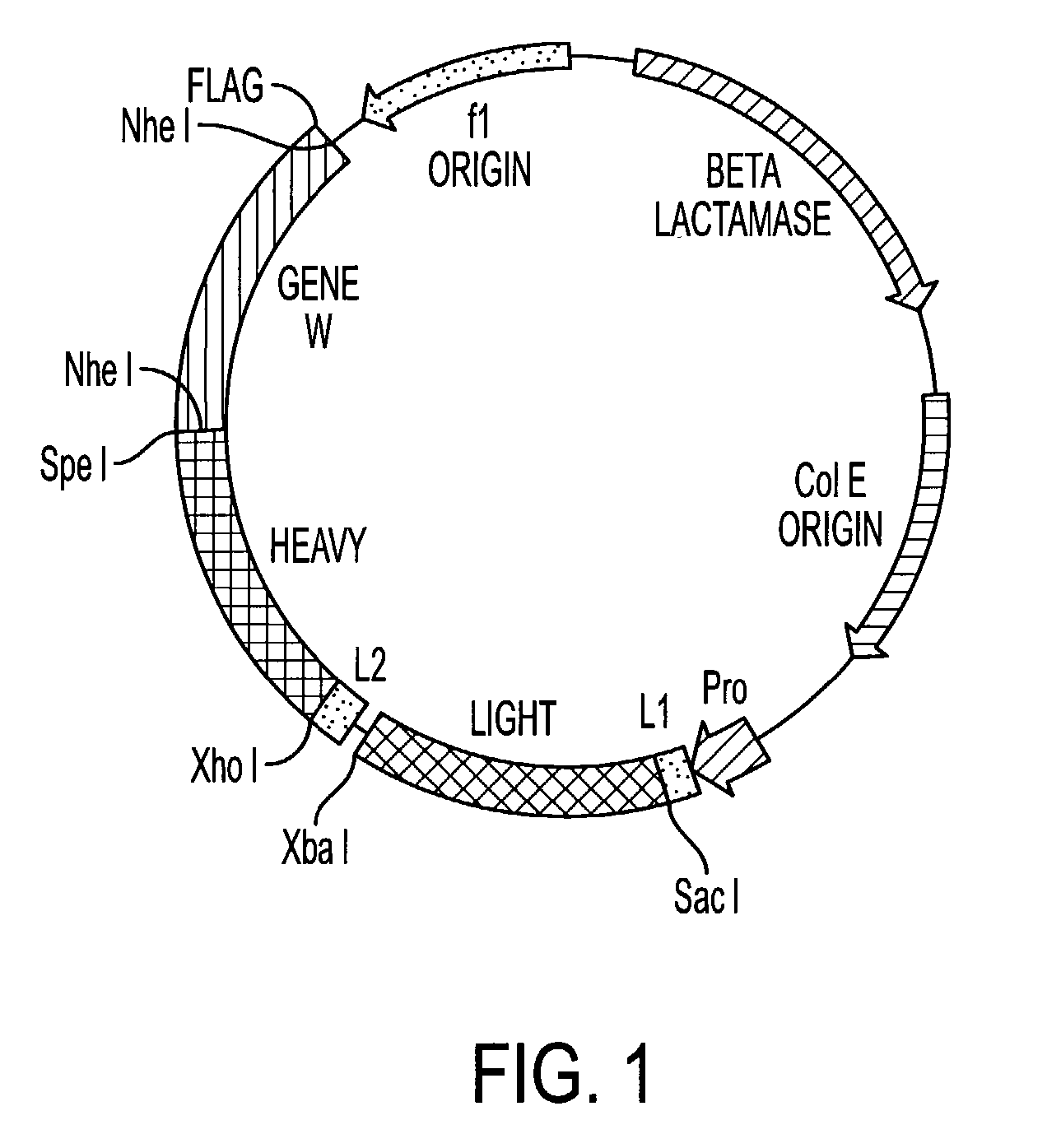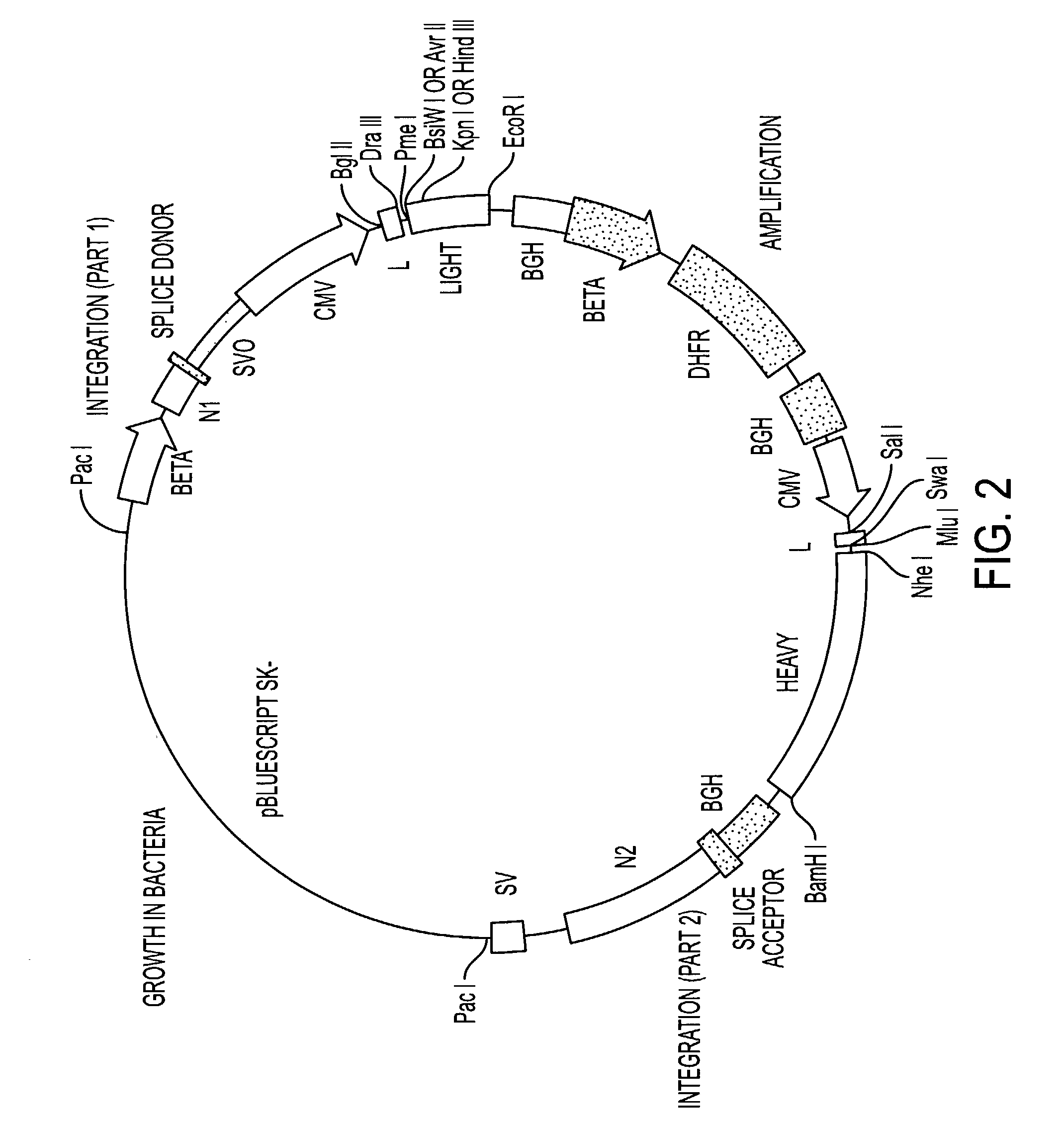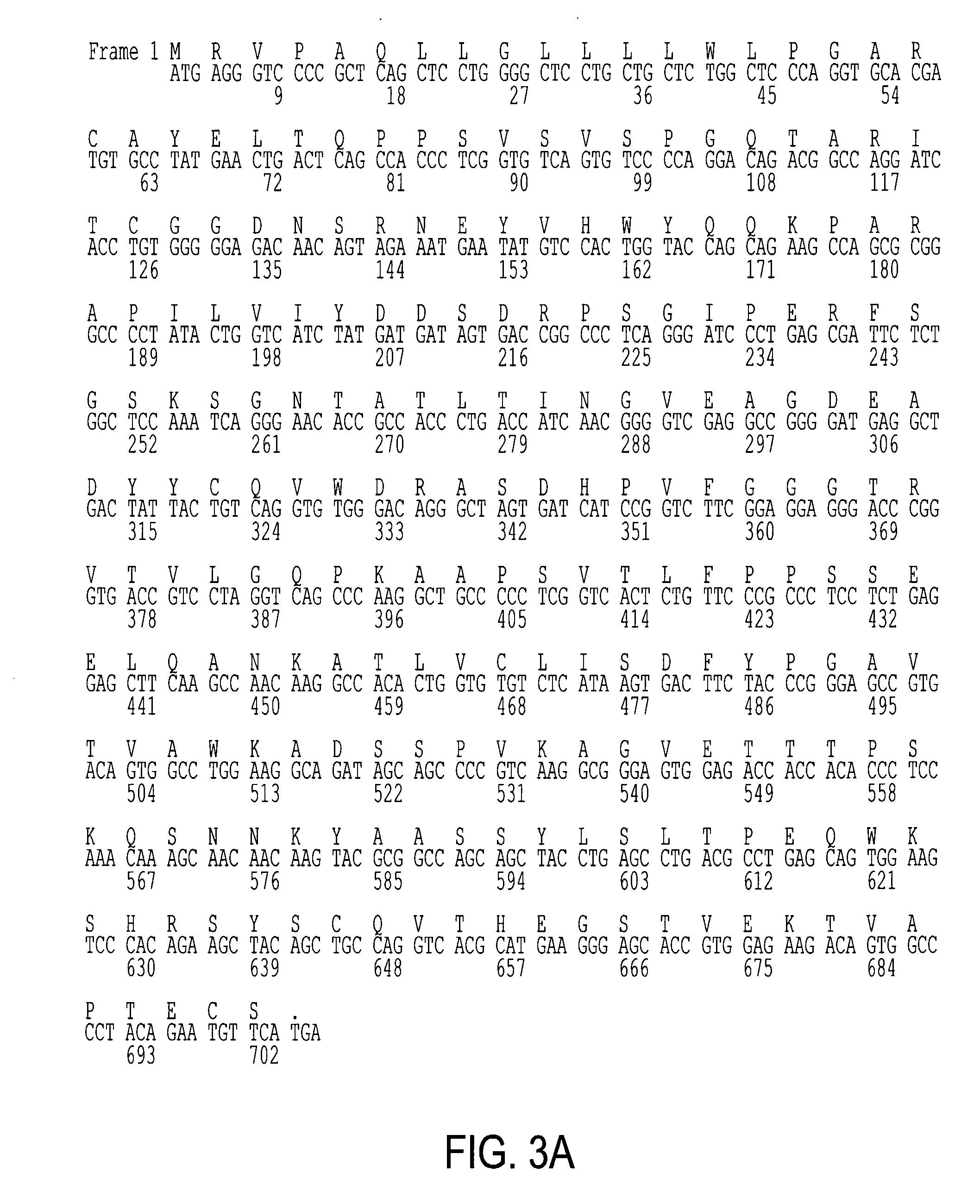Identification of unique binding interactions between certain antibodies and the human B7.1 and B7.2 co-stimulatory antigens
a technology of co-stimulatory antigen and unique binding interaction, which is applied in the direction of antibody medical ingredients, peptides/protein ingredients, peptides, etc., can solve the problems of limited overall success, inability of t cells to secrete il-2, and cell unresponsive to antigen, so as to prolong the survival time of tumor-bearing animals, inhibit tumor growth, and reduce tumor size
- Summary
- Abstract
- Description
- Claims
- Application Information
AI Technical Summary
Benefits of technology
Problems solved by technology
Method used
Image
Examples
example 2
[0179] Development of B7 / CTLA-4 Reagents
[0180] We have generated a number of reagents for the purpose of immunizing monkeys, developing binding and functional assays in vitro, screening heterohybridomas and panning phage libraries. Table 1 lists each reagent and its intended purpose. In the case of B7.1, RNA was extracted from SB cells and converted to cDNA using reverse transcriptase. The first strand cDNA was PCR amplified using B7.1 specific primers and cloned into IDEC's NEOSPLA mammalian expression vectors. CHO cells were transfected with B7.1 NEOSPLA DNA and clones expressing membrane associated B7.1 were identified. The B7.1 fusion protein was generated similarly, except that the PCR amplified B7.1 gene was cloned into a NEOSPLA cassette vector containing the human CH2 and CH3 immunoglobulin genes. CHO cells were transformed with the B7.1Ig NEOSPLA DNA and stable clones secreting B7.1 / Ig fusion protein were amplified. In general, the B7.2 and CTLA4 reagents were generated in ...
example 3
[0182] Generation of a Phage Display Library
[0183] Recombinant phage display libraries are generated from B7.1 and B7.2 immune monkeys. Lymph node and bone marrow biopsies are performed 7-12 days after immunization to harvest RNA rich B cells and plasma cells. RNA is isolated from the lymphocytes using the method described by Chomczynski Anal. Biochem., 162(1), 156-159, (1987). RNA is converted to cDNA using an oligo dT primer and reverse transcriptase. The first strand cDNA is divided into aliquots and PCR amplified using the sets of kappa, lambda, and heavy chain Fd region primers described earlier and either Pfu polymerase (Stratagene, San Diego) or Taq polymerase (Promega, Madison). The heavy chain PCR amplified products are pooled, cut with Xho VSpe I restriction enzymes and cloned into the vector pMS. Subsequently, the light chain PCR products are pooled, cut with Sac I / Xba I restriction enzymes, and cloned to create the recombinant library. XLI-Blue E. coli is transformed wit...
example 4
[0184] Characterization of Phage Fab Fragments
[0185] The monkey phage Fab fragments are characterized for their specificity and the ability to block B7.1-Ig and B7.2-Ig binding to CTLA-4-Ig or CTLA-4 transfected cells. Phage fragments are also characterized for cross-reactivity after first panning for 4 rounds on the B7 species used for immunization in order to select for high affinity fragments. Fab fragments identified from four rounds of panning either on B7.1 or B7.2 antigen coated surfaces are scaled up by infection and grown in 24 hour fermentation cultures of E coli. Fragments are purified by Kodak FLAG binding to a anti-FLAG affinity column. Purified phage Fabs are tested for affinity by an ELISA based direct binding modified Scatchard analysis (Katoh et al, J. Chem. BioEng., 76:451-454, (1993)) using Goat anti-monkey Fab antibodies or anti-FLAG MAb conjugated with horseradish peroxidase. The anti-monkey Fab reagents will be absorbed against human heavy chain constant region...
PUM
| Property | Measurement | Unit |
|---|---|---|
| Concentration | aaaaa | aaaaa |
| Interaction | aaaaa | aaaaa |
Abstract
Description
Claims
Application Information
 Login to View More
Login to View More - R&D Engineer
- R&D Manager
- IP Professional
- Industry Leading Data Capabilities
- Powerful AI technology
- Patent DNA Extraction
Browse by: Latest US Patents, China's latest patents, Technical Efficacy Thesaurus, Application Domain, Technology Topic, Popular Technical Reports.
© 2024 PatSnap. All rights reserved.Legal|Privacy policy|Modern Slavery Act Transparency Statement|Sitemap|About US| Contact US: help@patsnap.com










